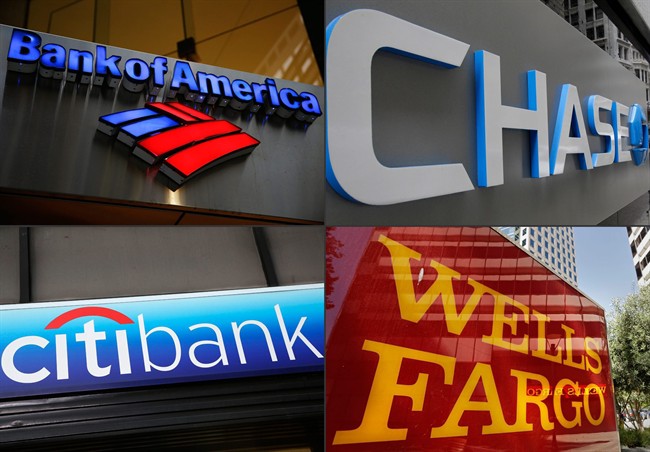WASHINGTON – Federal regulators are directing the eight biggest U.S. banks to hold capital at levels above industry requirements to cushion against unexpected losses and reduce the chances of future taxpayer bailouts.

The Federal Reserve’s action Monday means the eight banks together will be required to shore up their financial bases with about $200 billion in additional capital. The requirements also are aimed at encouraging the Wall Street mega-banks to shrink so they pose less risk to the financial system.
The banks include JPMorgan Chase, Citigroup and Bank of America.
Most of the banks have already put away the additional capital. JPMorgan is the only one that doesn’t already meet the requirements, which will be phased in from 2016 through 2018 and take full effect on Jan. 1, 2019. It currently falls about $12.5 billion short, according to Fed officials.
The Fed governors voted 5-0 at a public meeting to impose the so-called “capital surcharges” on the eight banks.
The extra capital requirements will increase in proportion to how risky the regulators deem a bank to be. A key risk factor will be how much a bank relies on short-term funding markets to borrow from other banks. Those markets seized up during the 2008 financial crisis.
The government stepped in during the crisis with hundreds of billions of dollars in bailouts of the big Wall Street banks as well as hundreds of smaller U.S. banks.
- B.C. to ban drug use in all public places in major overhaul of decriminalization
- Posters promoting ‘Steal From Loblaws Day’ are circulating. How did we get here?
- 3 women diagnosed with HIV after ‘vampire facials’ at unlicensed U.S. spa
- Canadian food banks are on the brink: ‘This is not a sustainable situation’
Most of the rules would take effect by Jan. 1, 2018.
The other banks subject to the capital requirements are Goldman Sachs, Wells Fargo, Morgan Stanley, Bank of New York Mellon and State Street Bank.
Stricter capital requirements for banks were mandated by Congress after the financial crisis, which struck in the fall of 2008 and ignited the worst economic downturn since the Great Depression.
In recent years, the Fed and other regulators have put into effect a series of rules for banks to increase their capital buffers, as required by the 2010 financial overhaul law. The new additional layer of requirements for the biggest banks also exceeds the levels mandated by international regulators.

Comments